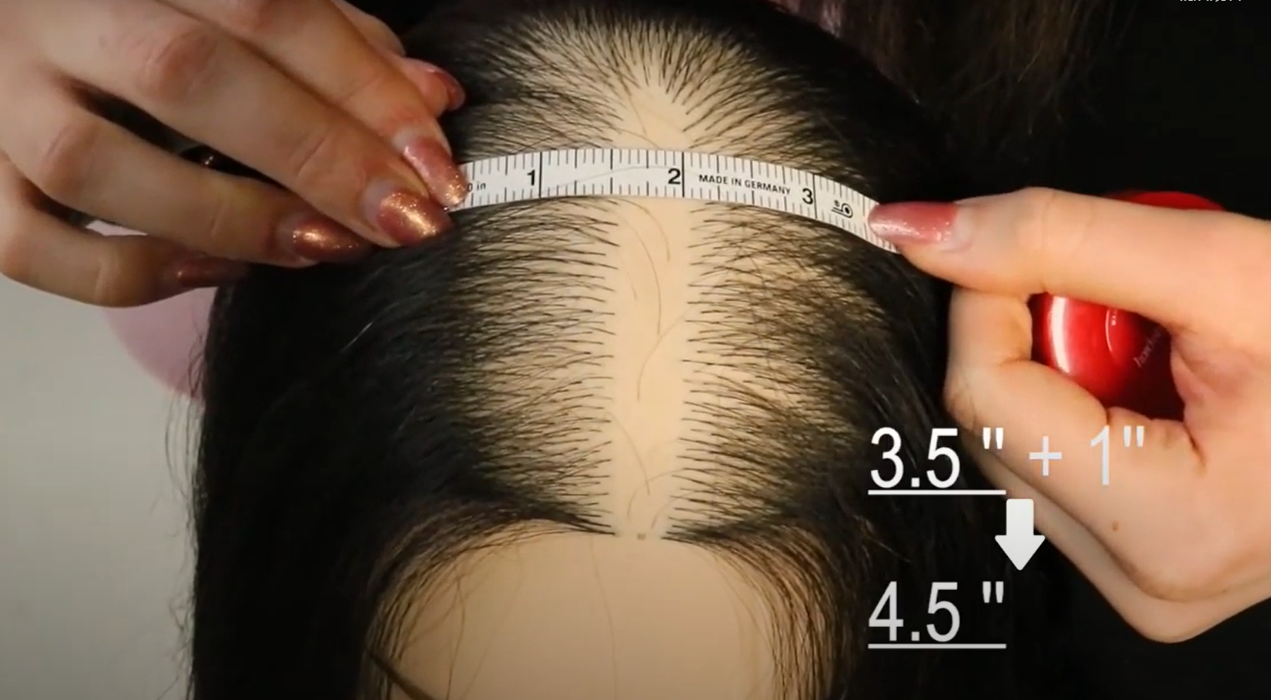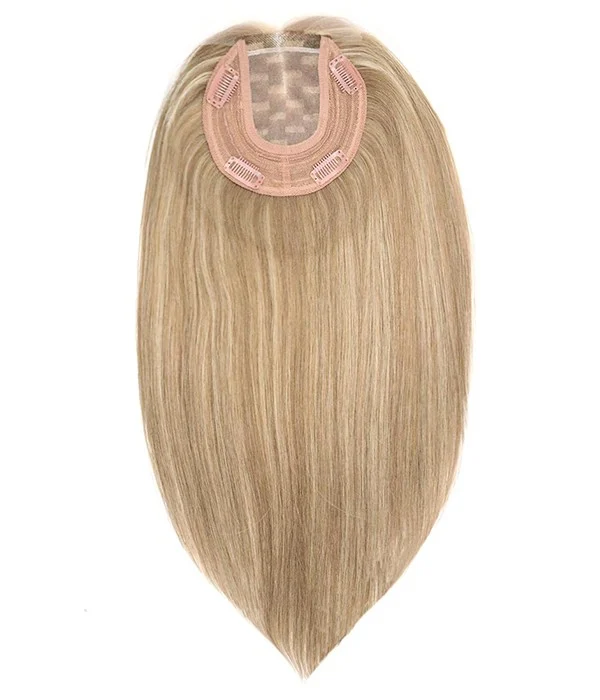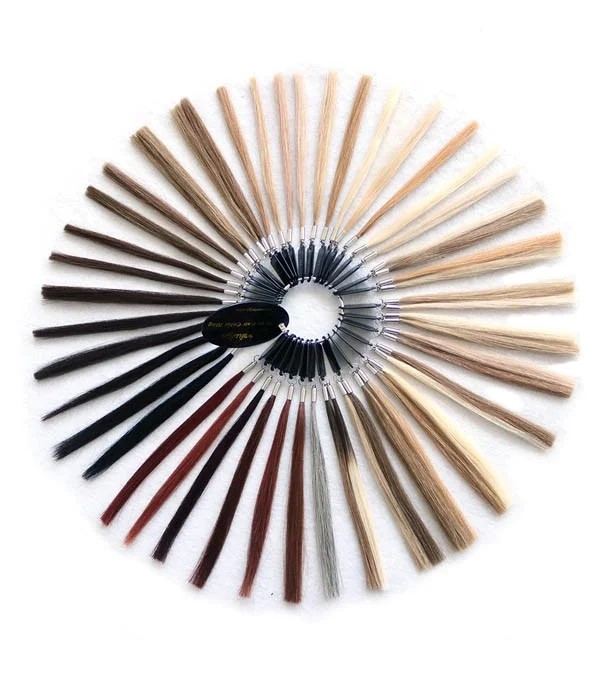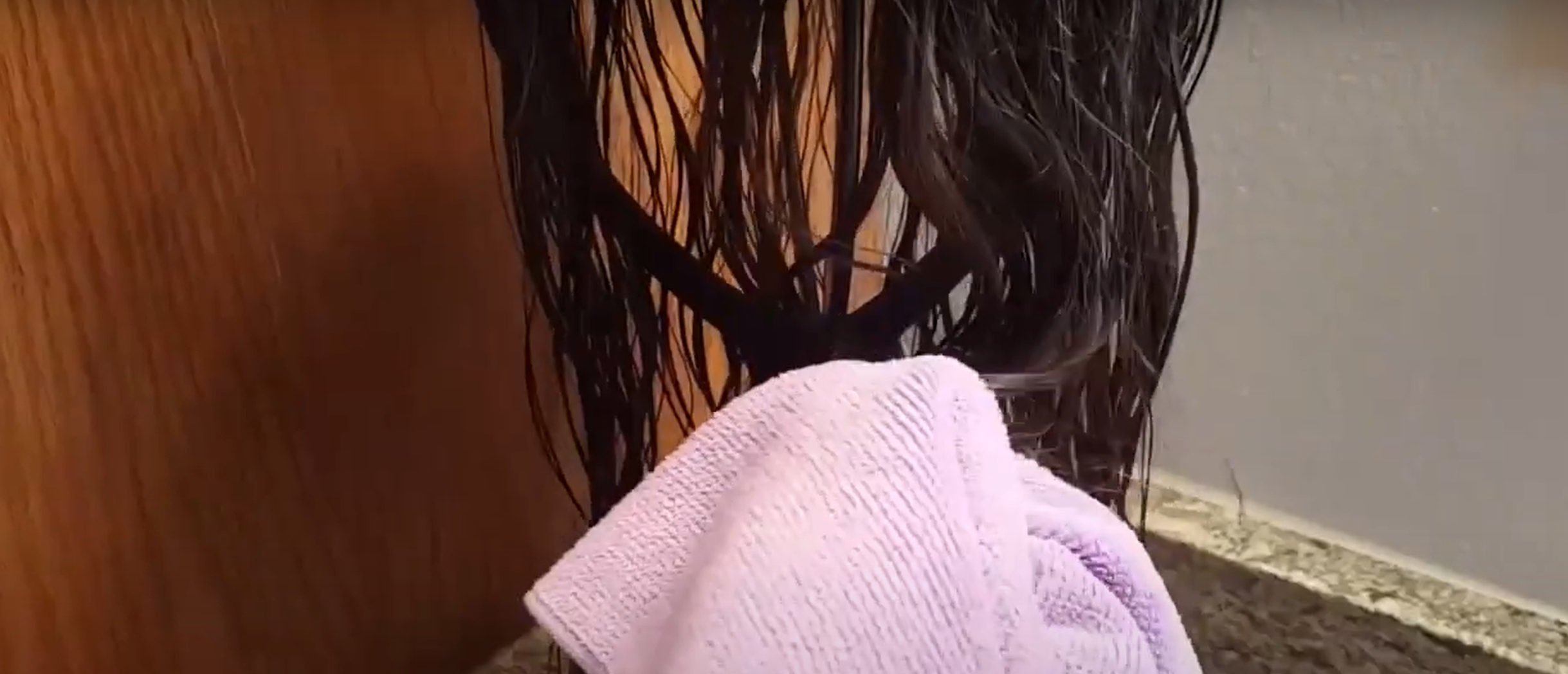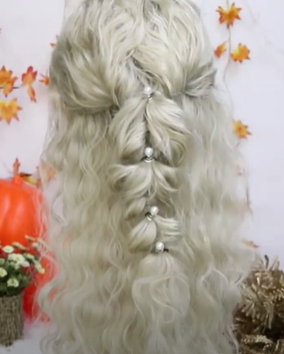Maintaining your hair toppers is essential to keep it looking its best and ensure its longevity. In this comprehensive guide, we’ll walk you through a step-by-step tutorial to help you wash and care for your hair topper with ease and expertise.
1. Brushing and Preparation of Hairpieces
Before embarking on the washing process, it’s crucial to give your hair topper a good brush. We advise brushing through the topper to remove any tangles or knots. This initial step helps prevent further tangling during the washing process.
Brushing and preparation are fundamental steps in the care and maintenance of hairpieces, ensuring they look their best and remain tangle-free. Begin by gently brushing through your hairpiece using a brush with soft bristles. Start from the ends and work your way up to the roots, being cautious not to pull or snag the hair fibers. This helps in removing any knots, tangles, or loose hairs, making the rest of the maintenance process more manageable.
Brushing your hairpiece is not only about detangling but also about evenly distributing the hair’s natural oils and preventing matting. It’s essential to perform this step regularly, especially before washing or styling your hairpiece. By taking the time to prep and brush your hairpiece, you’ll ensure that it not only looks its best but also remains in optimal condition for longer, ultimately saving you time and effort in the long run.
2. Creating a Soapy Solution
The next step involves creating a soapy solution for washing your hair topper. We recommend using a bowl of cool water and adding two squirts of high-quality shampoo. The choice of shampoo can significantly impact the outcome of your topper’s wash. Opt for a gentle, sulfate-free, and pH-balanced shampoo to prevent any damage to the hair fibers or the base of the topper. You can choose a brand called UniWigs, but feel free to choose a shampoo that suits your preferences and needs.
Creating a soapy solution is a crucial step in the process of washing and caring for your hair topper. This solution serves as the cleansing agent that will help remove accumulated dirt, oils, and styling products from the topper. We recommend using a bowl of cool water for this purpose, ensuring that the water is not too hot, as excessive heat can be damaging to the topper’s hair and base.
This solution should be enough to ensure the topper gets evenly saturated during the washing process. The soapy solution sets the foundation for an effective cleanse and prepares your hair topper for the next steps in the care routine.

3. Soaking and Gentle Scrubbing of Hairpieces
This step helps to remove accumulated dirt, oils, and styling products from the topper. Following the initial soak, you can use a small amount of shampoo to gently scrub the mono top, lace top, and wafting areas. It’s essential to be gentle during this process, as excessive rubbing or aggressive handling can lead to damage. Notice how to use your thumb to hold the part in place, ensuring the part line stays intact.

4. Rinsing and Part Preservation of Hairpieces
Rinsing your topper thoroughly is vital to remove all shampoo residues and ensure that it’s clean and fresh. While rinsing, you should continue to keep your thumb over the part line to maintain its position. Preserving the part line is essential, as it helps the topper maintain its natural appearance and prevents any shifting of the base.
5. Conditioning with Care
Avoid applying conditioner to the monotop, lace top, or hand-tied area, as these parts are more delicate and don’t require conditioning. Conditioning the ends helps keep the hair soft, smooth, and manageable. Allow the conditioner to set for about 5 minutes before gently rinsing it out.
Conditioning your hair topper with care is a crucial step in the maintenance process. As demonstrated in the video, it’s essential to apply conditioner only to the ends of the topper’s hair. Avoiding the monotop, lace top, or hand-tied areas during conditioning is essential, as these parts are more delicate and do not require the same level of moisture as the hair itself. By limiting conditioner application to the ends, you prevent any potential buildup or residue on the delicate base, ensuring it remains in excellent condition and ready to perform as intended.

Allow the conditioner to set for about 5 minutes. This short waiting period allows the conditioner to work its magic, softening the hair and making it more manageable. After this brief interval, proceed to gently rinse out the conditioner thoroughly. This ensures that your topper retains its silky, smooth texture without any excess product that might weigh it down. By following these conditioning guidelines, you help your topper maintain its quality and appearance, making it an elegant and long-lasting addition to your hair routine.

6. Drying and Styling of Hairpieces
Once your topper is thoroughly rinsed, gently squeeze out excess water. We suggest towel-drying the topper to remove as much moisture as possible. A portable wig stand is then recommended to allow your topper to air dry for the next 12 hours. The choice of a wig stand is practical, as it helps the topper maintain its shape and allows for even drying.
Drying and styling your hairpieces, including wigs, toppers, and extensions, is a crucial step in the overall maintenance routine. After washing, gently squeeze out excess water using a towel, being careful not to wring or twist the hair, which can lead to damage or tangling. To facilitate even drying and maintain the shape, it’s advisable to place your hairpiece on a wig stand. A wig stand is particularly useful as it allows proper air circulation, ensuring that your hairpiece dries more quickly and evenly.
When it comes to styling, remember that many hairpieces come pre-styled, but you can make adjustments if needed. You can use low-heat styling tools like curling irons or straighteners, but be cautious and avoid high temperatures that might damage synthetic hair. For heat-friendly synthetic or human hair pieces, you have more flexibility in styling, but it’s still recommended to use heat-protectant products. Consider using wig-specific styling products and avoid heavy or oily styling products that can weigh down the hair. Always style your hairpiece when it’s completely dry to achieve the desired look and don’t hesitate to consult with a professional stylist for more intricate styling needs. Proper drying and styling are essential for maintaining the longevity and appearance of your toppers.
By following these instructions and using high-quality products, you can ensure that your topper remains in excellent condition, ready to enhance your hair’s appearance for a long time.








